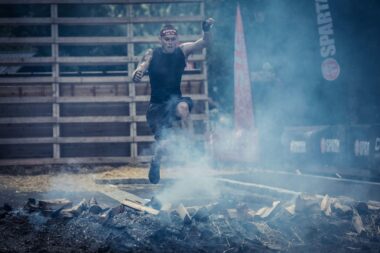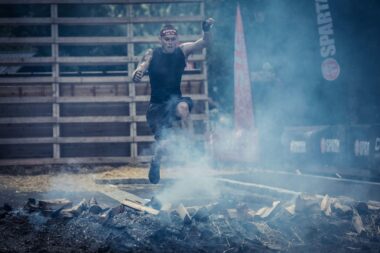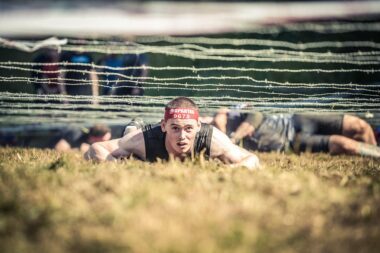Essential Obstacles to Include in a Virtual Obstacle Course Race
Creating a virtual obstacle course race can be an exciting challenge, especially when thinking about the obstacles that will define the experience. An excellent start is incorporating variations of crawling obstacles, where participants must maintain a low profile. Options include crawling under ropes, through tires, or beneath netting. These crawling challenges promote flexibility and provide an engaging physical requirement that can be done in various spaces, even backyards. Additionally, stacking these obstacles adds an element of strategy, forcing participants to assess their abilities when deciding how to proceed. One interesting method is the use of a crawling section followed immediately by a climb, helping to simulate a physical transition they would encounter in outdoor courses. Another crawling challenge would be chest crawls that encourage participants to keep their core muscles activated. Each crawling segment can also be timed for added competition, making the race even more thrilling. Including timing details makes participants focus on their speed and efficiency, which is essential in any race scenario.
Following crawling obstacles, creating balance challenges is vital for a well-rounded course. For instance, incorporating beam walks or balance boards requires participants to engage their core muscles and develop coordination. This element mirrors traditional obstacle racing since stability can significantly affect performance time. Ensuring a variety of balance obstacles maintains interest and pushes fitness levels. You could use simple materials like planks, logs, or inflatable balance equipment, which are very accessible. Variations like narrow walking paths and areas with pivoting components can enhance difficulty. Furthermore, allowing for different skill levels expands accessibility for newcomers and experts alike, encouraging everyone to partake. Next, consider agility-based obstacles which are integral for a sense of accomplishment. These can include courses with agility ladders, cone sprints, or zigzag paths that sharpen footwork. Agility obstacles not only train speed but also encourage participants to use their body effectively in limited space. The mixture of balance and agility contributes to a comprehensive challenge for all racers, offering a balanced virtual experience that fosters enjoyment.
Incorporating Strength Challenges
Equally important in any virtual obstacle course are strength challenges. Incorporating weighted bag carries or resistance-based movements engages upper and lower body muscles, testing participants’ strength endurance. Using household objects like backpacks filled with books provides a handy substitute for traditional weight training. Additionally, you could include push-up and squat stations, encouraging participants to pause during the challenge while still staying engaged in competition. Another exciting element is incorporating intervals of bodyweight exercises, promoting endurance alongside strength. Each segment can be timed for maximum effort, allowing racers to chase personal records. Moreover, participants enjoy variety in their workouts, and alternating strength formats guarantees continual engagement. Another critical component is introducing stretching or flexibility obstacles, which allow athletes to recover while still making progress. Activities like yoga poses or balance stretches can allow racers valuable recovery time while keeping them active. Each strength section essentially contributes to an authentic experience that benefits all fitness levels. Providing clear instructions and demonstrations helps maintain safety, ensures workout effectiveness, and maintains engagement throughout the course.
To further enhance the virtual experience, you should consider team-building obstacles. Incorporating challenges where groups must coordinate or strategize will elevate the excitement and camaraderie. Activities like group plank holds or partner-assisted stretches can effectively promote collaboration. Team-based tasks engage numbers and can turn solitary races into a social experience, which is pivotal in virtual settings. Yet another important aspect is creating timed segments where participant groups compete against one another. Racing against friends fosters motivation and sparks healthy competition. Furthermore, creative elements, such as relay races, keep events lively. Participants can trade off completion of various obstacles, adding a fun dynamic to the race. Incorporating challenges that require problem-solving heightens teamwork further; for example, puzzle challenges allowing participants to unlock the next obstacle. Each team element will enhance the enjoyment while enabling participants to channel their competitive spirit and celebrate teamwork. Being part of a cohesive unit can motivate participants to push further, ultimately refining their fitness models and making every race memorable while forgetting any self-doubt, proving virtual fitness can unite people.
The Importance of Hydration Stations
In every virtual obstacle race, hydration stations should not be ignored. It’s essential to encourage participants to hydrate before, during, and after the challenges. As these courses can be tiring and physically demanding, ensuring they stay hydrated is vital for their health and performance. Those organizing such events can propose ideas for setting up water breaks as necessary checkpoints. Using social media or course coordination apps can also remind racers to stay hydrated, turning hydration into an interactive race experience. To enhance engagement, offer virtual badges for participants who hydrate adequately, allowing them to celebrate a key racing aspect. Moreover, you can incorporate hydration challenges, prompting racers to consume a specified amount of water during the event, thus promoting mindful hydration. Additionally, sharing educational content about the importance of hydration on platforms can be beneficial, providing participants the necessary knowledge for performance. Attendees educated about hydration will make informed choices, enhancing their overall experience and health as they tackle virtual obstacles. Therefore, it creates a supportive community, and everyone receives essential wellness information within an entertaining framework.
Another crucial aspect to examine is providing mental challenges within the obstacle course. Mental fortitude is equally crucial for completing physical challenges. Incorporating cognitive elements, such as memory-based tasks or riddles placed between physical obstacles, can significantly elevate the race’s quality. Tasks could range from solving puzzles or recalling sequences, testing each competitor’s skills in unexpected ways. These mental spurts can serve as crucial impart messages, making participants balance their physical readiness with mental challenges. Adding a cognitive challenge forces participants to think during exerting themselves physically, instilling a sense of accomplishment upon completion. Furthermore, timed mental checkpoints can enhance competitive spirit, as participants compete against one another in both mental and physical realms, providing an overall engaging experience. Sharing completed answers on social media can strengthen community connections, as racers compare strategies. Essential mental components will reshape how participants approach fitness, merging dedication with strategy in ways that inspire them to reach their limits and push through. It will ultimately create a powerful novel experience driven by a dynamic blend of physical and mental aspects throughout the race.
Wrapping Up Your Virtual Experience
The completion of your virtual obstacle course deserves a proper wrap-up. Every finisher should be celebrated for their efforts through digital certificates or prizes. Offering unique digital badges to recognize achievements can both reward participants and enhance the sense of accomplishment. Another possibility is creating a virtual leaderboard for each event, allowing participants to see where they placed alongside competitors while providing opportunities for everyone to witness camaraderie. Social media plays a significant role in this wrap-up as well; encouraging participants to share their experiences can inspire others. Hosting a virtual party post-event would enhance community ties and promote wellness together, strengthening relationships built over the race. An engaged community celebrates everyone as they set new race goals for the future. Moreover, capture testimonials or encourage feedback to understand what worked, allowing you to refine the experience for future courses. Celebrate stories of overcoming obstacles, motivating racers, and fueling their commitment for the next virtual obstacle experience. Thus, building a vibrant community focused on collective fitness can maximize the virtual participation of every contestant.
Summing it all up, one can see that virtual obstacle courses hold unique challenges and opportunities that go beyond traditional racing. Organizing these events requires careful planning to create an engaging experience for participants through obstacles that address various fitness aspects. By integrating crawling, balance, agility, strength, hydration, mental challenges, and opportunities for teamwork, organizers can craft an entertaining and memorable event. Each component aims to push boundaries, pushing everyone to connect on physical and social levels. As many look towards fitness from their homes, these courses present refreshing options to stay fit while having fun. All elements contribute to developing personal and collective wellness goals within a community framework where everyone can thrive. Supporting individuals to challenge themselves physically and mentally in a fun environment enhances motivation further. Planning to celebrate participant achievements encourages continued growth and healing, vital for ongoing fitness journeys. Not only do these virtual races provide physical challenges, but they also weave social interactions, allowing connections to flourish. Hence, the future of obstacle racing is thriving in virtual spaces, transforming fitness culture from the depths of our homes to the digital environment.





